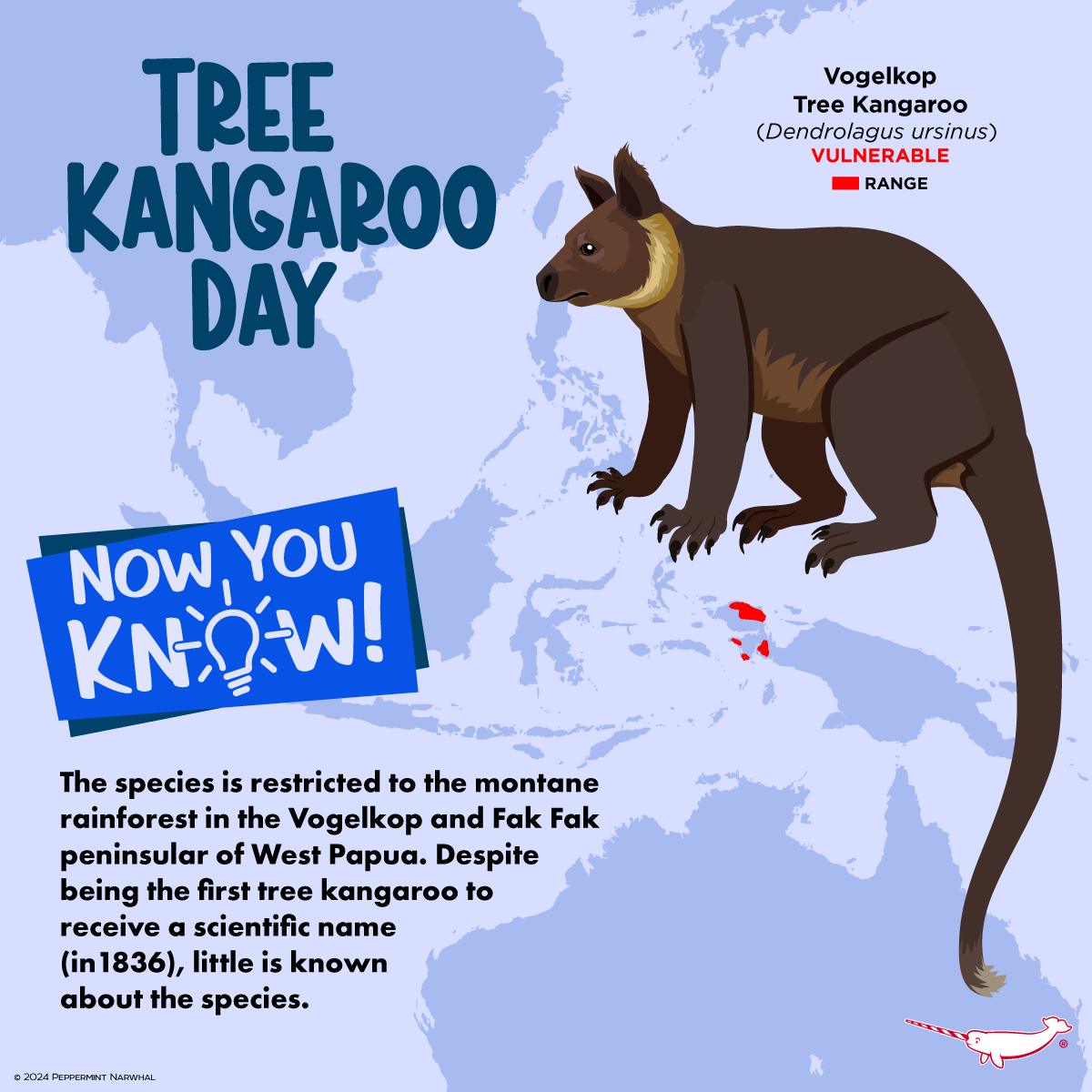- The Vogelkop Tree Kangaroo: An Introduction to Its Habitat and Challenges
- Conservation Efforts and Why They Are Critical for the Vogelkop Tree Kangaroo
- The Role of Zoology and Zoo Management in Species Conservation
- How Public Involvement and Merchandise Support Conservation Goals
The Vogelkop Tree Kangaroo (Dendrolagus ursinus) inhabits the montane rainforests of the Vogelkop and Fak Fak peninsulas in West Papua. It has the unique distinction of being the first tree kangaroo to be named scientifically in 1836. Despite this early recognition, the Vogelkop Tree Kangaroo remains a lesser-known species, with significant gaps in understanding concerning its ecology, behavior, and conservation status. This article highlights this remarkable species, emphasizing the importance of conservation, zoo management in its survival and how public engagement can aid its preservation.
The habitat of the Vogelkop Tree Kangaroo is both rich and fragile. These animals are adapted to live in the dense forest canopies, relying on a diet of leaves, flowers, and abundant fruits in their habitat. However, their existence is increasingly threatened by habitat destruction due to logging and land conversion for agriculture. The changing climate also poses a risk, altering the delicate balance of their ecosystem. These threats underline the urgency of conservation measures.
Conservation initiatives for the Vogelkop Tree Kangaroo involve habitat protection, research, and community involvement. Protecting their habitats involves designating protected areas and enforcing laws to prevent illegal logging and land conversion. Research is essential to fill the knowledge gaps about the species – its population size, distribution, and reproductive biology. This information is critical in forming effective conservation strategies. Community involvement is especially vital. Engaging local communities in conservation activities creates an opportunity to foster a sense of stewardship and provide alternative livelihoods that reduce reliance on forest resources.
Zoology and zoo management play pivotal roles in conserving the Vogelkop Tree Kangaroo. Zoologists contribute by conducting research that informs conservation strategies. Their work helps to understand the species’ needs and threats. Modern zoos are increasingly involved in conservation and education. They participate in breeding programs that can help boost populations of endangered species. Zoos also serve as educational platforms, raising awareness about conservation issues and what the public can do to help.
Public involvement is crucial for conserving endangered species like the Vogelkop Tree Kangaroo. Awareness campaigns, such as Happy Tree Kangaroo Day, play a significant role in highlighting the plight of these animals and the efforts being made to save them. Supporting conservation-focused merchandise also allows the public to contribute financially to these efforts. Websites and online stores offer products whose proceeds support conservation projects directly. This direct involvement creates a connection between the public and conservation efforts, making individuals more likely to actively support such causes.
In summary, conserving the Vogelkop Tree Kangaroo demands a comprehensive approach involving scientific research, habitat protection, local community engagement, and public support. Zoology, zoo management, and widespread awareness are all crucial components of this effort. The public’s role in supporting conservation through merchandise purchases and participation in awareness campaigns cannot be understated. As awareness grows, so does hope for the future of the Vogelkop Tree Kangaroo, an emblem of our planet’s rich biodiversity and that we must tirelessly work to protect. Engaging with this cause offers a pathway to ensure that future generations will continue to learn from and enjoy the remarkable biodiversity of our world.
*****
Source Description
Happy Tree Kangaroo Day!
Now You Know! – The Vogelkop Tree Kangaroo (Dendrolagus ursinus) is restricted to the montane rainforest in the Vogelkop and Fak Fak peninsular of West Papua. Despite being the first tree kangaroo to receive a scientific name (in1836), little is known about the species.
Checkout the NEW Tree Kangaroo,
a part of our Series 6
Pledge Now: endangeredpins.com
Campaign ends June 3, 2024.
Shop
www.peppermintnarwhal.com
International Shoppers visit our store on Etsy:
https://www.etsy.com/shop/PeppermintNarwhal

